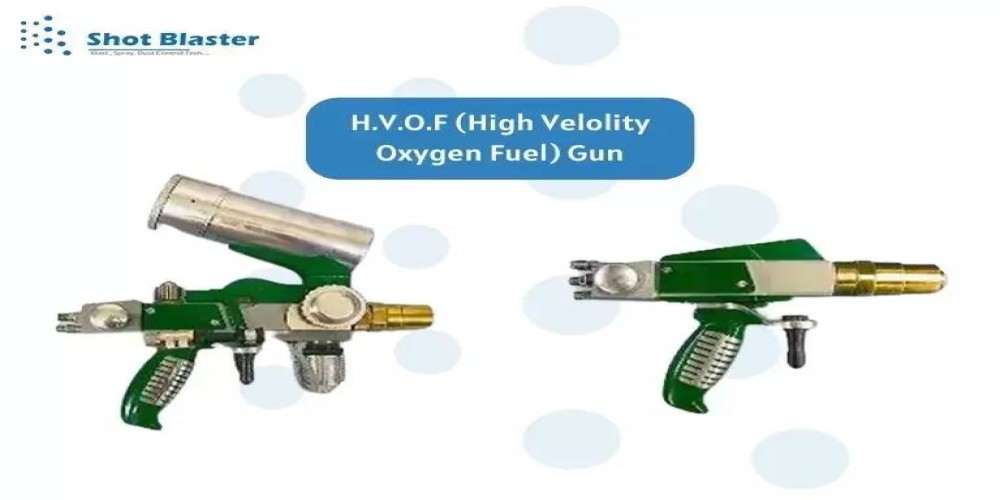HVOF Coating for Seals
 : 29.08.2023
: 29.08.2023
Seals can have several benefits from having HVOF (High-Velocity Oxygen Fuel) coatings applied to them, particularly in industries where seals are prone to harsh environments, wear, and corrosion. Because of the motion of the pieces they come into touch with, seals frequently encounter friction and wear. Seals' wear resistance may be considerably increased by HVOF thermal spray coating, prolonging their lifespan and lowering the frequency of replacement.
HVOF coatings have the ability to provide seals with a better surface finish, lowering friction between moving parts. Reduced friction improves the machinery's performance while lowering the danger of overheating and premature wear. HVOF coatings can serve as a protective barrier against corrosive chemicals in sectors where seals are exposed to corrosive conditions, such as chemical processing or maritime applications. This prolongs the seal's useful life and stops the underlying seal material from degrading.
Some seals work in hot settings where the sealing components could fail or deteriorate. Because HVOF coatings can survive high temperatures, even in the most severe thermal circumstances, the seals will remain functional and in good condition. HVOF coatings are renowned for their capacity to withstand erosion and abrasion brought on by fluid or particle flows moving at high speeds. This is especially crucial for seals in environments with abrasive particles.
HVOF coatings can be utilized to rebuild the dimensions and functioning of worn-out or damaged seal surfaces. Reducing the requirement for a total seal replacement, can save expenditures. HVOF coating higher surface polish and wear resistance can result in better sealing performance, lowering the danger of leaks and maintaining effective fluid or gas containment. HVOF coatings may be made to fit certain seal needs. You may select coatings with various characteristics, such as hardness, friction coefficient, and chemical resistance, depending on the application.
The likelihood of unanticipated seal failures and the ensuing operational interruptions is lower with HVOF coating for seals because they are more dependable and consistent in their performance throughout time. Compared to uncoated seals, HVOF-coated seals require less frequent maintenance and replacement. This results in less downtime and related expenses. HVOF coatings may be utilized on a range of seal materials, making them compatible with the materials and seal designs already in use across several sectors.
It's crucial to remember that the particular application and the kind of seal being utilized determine the best HVOF coating material and process parameters. The performance requirements and operating circumstances of the seals in your business may be aligned with the coating solution by consulting coating specialists and manufacturers.
Advantages of HVOF coating for Seals
HVOF coatings provide seals with a sturdy covering of material that is incredibly resistant to abrasion, friction, and wear. This helps the seals last longer and requires less frequent repairs less frequently, especially in settings with significant wear. HVOF gun provide seals with a consistent, smooth surface. This increased surface polish improves sealing performance and efficiency by lowering friction and reducing the possibility of leaks.
HVOF coatings provide exceptional corrosion resistance, which makes them perfect for seals used in settings where exposure to corrosive materials, moisture, and chemicals is frequent. The coating serves as a barrier of defense, maintaining the integrity of the sealant. Seals that work at high temperatures are used in several industrial applications. HVOF coatings are renowned for their capacity to endure high temperatures without degrading, ensuring that seals continue to function as intended even in extremely hot weather.
HVOF System Process For Seals
High-velocity flows can expose seals in fluid handling systems to erosion and cavitation. These demanding circumstances are resistant to HVOF coatings, reducing damage and maintaining seal integrity. Better sealing performance is a result of HVOF coatings higher wear resistance and improved surface quality. As a result, the chance of a fluid or gas leak decreases, increasing system efficiency and safety. HVOF coatings can rejuvenate worn or damaged seal surfaces. The seal's size and performance can be efficiently rebuilt through repair, extending its useful life and preventing the need for early replacements.
HVOF coatings may be made to fit a variety of seal specifications. Depending on the requirements of the application, coatings with different hardness, friction characteristics, and other qualities can be chosen. Elastomers, metals, and ceramics are just a few of the seal materials that may be coated using HVOF. This flexibility guarantees compatibility with various seal designs and substances. Due to their increased endurance, HVOF-coated seals require less regular maintenance and replacement. Reduced downtime, improved operational effectiveness, and cost savings follow from this.
HVOF spray gun coatings aid to resource-saving and waste reduction by increasing the service life of seals and decreasing the need for replacements, which is in line with environmental sustainability objectives. The chance of unanticipated seal failures and operational interruptions is lower when seals are HVOF-coated because they keep their performance consistent over time. In conclusion, HVOF coatings provide a complete solution to improve the dependability, durability, and efficiency of seals in a variety of industrial applications. However, choosing the appropriate coating material and process parameters necessitates careful consideration of the needs of the particular application, and working with specialists in the field is advised for the best outcomes.
All Blogs
